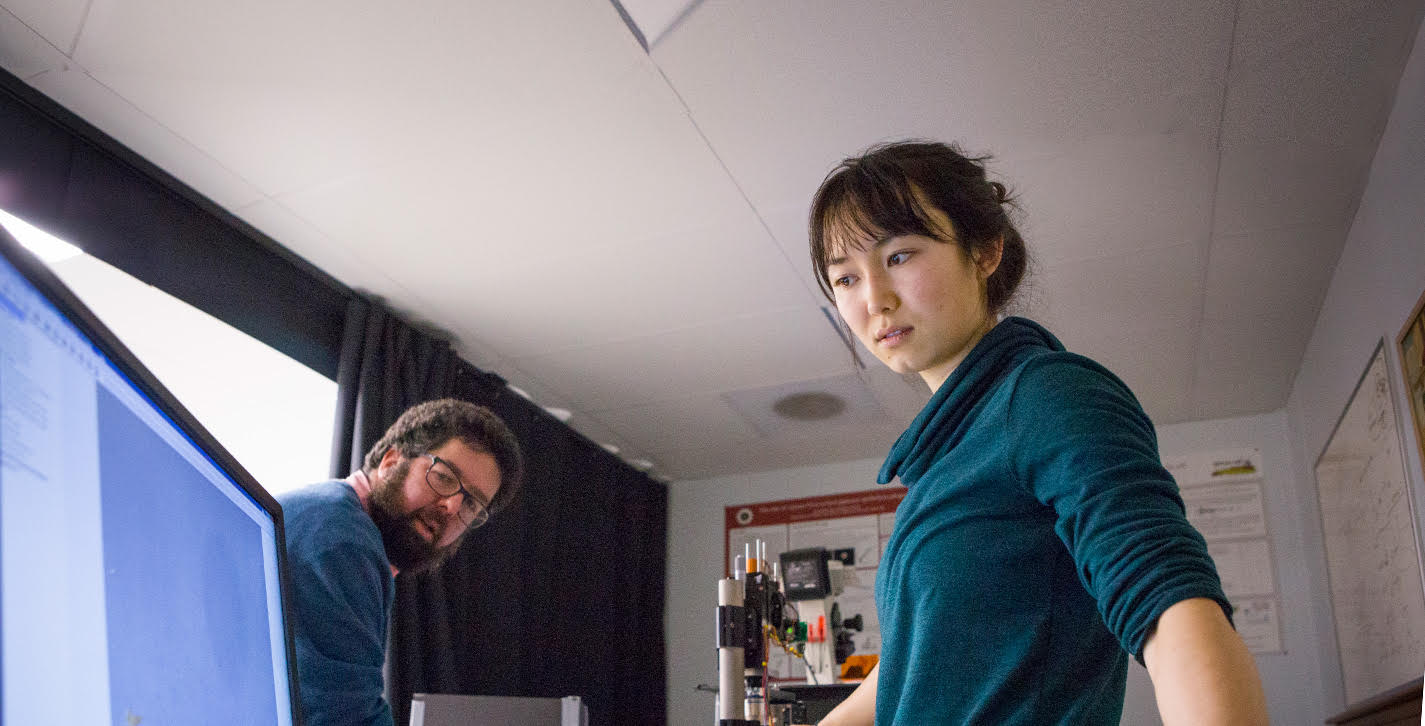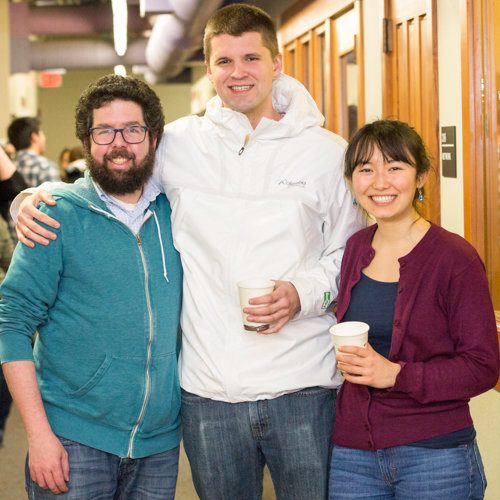He doesn’t smell like gas, have grease under his fingernails or drive a hot rod, but David Altman is a master mechanic — a molecular motor head of the highest order. His garage is in the basement of Collins Science Center, and he collaborates with Willamette students and domestic and international researchers to understand one of our bodies’ key motor proteins, myosin.
Myosin not only flexes our muscles, it takes out the trash inside our cells. When these molecular engines break down, people can go blind. Hearts stop beating.
Yet, much of what we know about myosin is based on a big assumption: that the protein works inside of the cell the same way it does outside. Why make this assumption? It’s hard to study myosin in vivo, or inside of the cell, because molecules crash into each other inside the cell’s violent, roiling confines.
Altman isn’t sure it’s safe to assume myosin works the same inside and out of the cell. He wanted to put it to the test using the laser-based molecular trap in his lab but faced the same roadblock that’s stymied similar efforts: A laser beam bends when it enters a cell, distorting the trap.
But Altman’s found a nifty trick to overcome the problem.
“Our molecular trap works by using a laser to nudge a one-micron plastic bead, which is about 100 times smaller than the width of a human hair,” says Altman. To accurately measure the force applied with the laser to the bead, the team needs to know about the stuff inside the cell—the medium through which the laser beam will travel.
After poring through the literature, Altman found a technique another lab was using for a different purpose. Using fluid outside the cell similar to the fluid inside prevents the laser beam from bending, allowing Altman’s team to manipulate myosin within the cell.
“A good analogy for the technique is to put a glass rod in a cup of water,” says Altman. “You can see the rod in water, because light changes speed and bends as it moves from water to glass. But if you fill the glass with vegetable oil, the rod disappears.”
As Wesson oil and Pyrex glass have similar indices of refraction, light travels about the same speed through both and won’t bend when it goes from one to another.
Special thanks to Ellen Rumley ‘18 for this demonstration and to Michaela Kleinert for use of the equipment.
With this “refractive-index matching” technique, Altman’s team can take on experiments and roles that would typically be reserved for graduate students at other colleges, a tremendous opportunity for students who are interested in laboratory research.
It’s already paid off for Ellen Rumley ‘18, who heard about Altman’s lab from Anders Koll ’14. “I was a freshman, and Anders was my tour guide and a member of Altman’s lab. He encouraged me to consider joining,” says Rumley. Fascinated by robotics before attending Willamette, Rumley took Koll’s advice and discovered her passion for research. Now a senior, Rumley’s heading for grad school to study robotics — possibly with a biophysics emphasis if she lands in Johns Hopkins’ robotic surgery program.
Altman works with about ten student researchers each semester and has already sketched out a series of experiments they’ll perform using the molecular trapping system.
“We’ve found a mix of a simple systems and techniques that make an otherwise intimidating experiment more approachable,” says Altman. “We’ll be able to explore basic science while diving into medically relevant work inside the cell — allowing us to explore the interplay of biology and physics.”
On February 7, as part of Willamette University’s “Distilled: Pub Talks” series, Altman will present, “Moving in a Microscopic Hurricane.” He’ll describe how a cell’s minuscule engines keep our bodies running. The free talk begins at 7:30 p.m. at The Half Penny, just south of Madrona Avenue at 3743 Commercial St. S., The Half Penny is open to all ages until 9 p.m.


